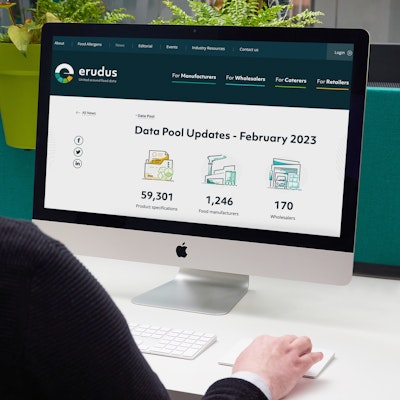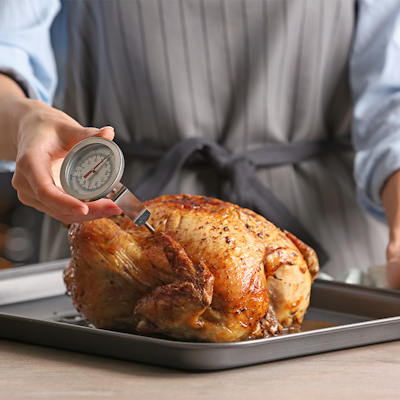Important Changes to Cereals and Gluten Attributes

Attention all Erudus Manufacturers…We’re making important system changes on 1 March 2020, ‘Cereals’ attributes and the ‘Gluten’ attribute are changing and will require your attention.
We’re making changes to the following attributes:
| Attribute Name | Details |
| Gluten | As of 1 March 2020, the contains Gluten attribute will be removed from the data set, making it no longer available to use. |
| Cereals | The attribute label will change from ‘Contains Cereal’ to ‘Contains Cereals Containing Gluten’ |
At the same time we will be introducing a new attribute:
| Attribute Name | Details |
| Contains Cereals containing Gluten <20ppm | A new attribute ‘Contains Cereals containing Gluten <20ppm’ will be added on 1 March 2020. |
The changes are designed to not only adhere to legislation and follow best practice (further information below) guidance more closely, they’re also intended to provide further clarity of information and better usability of the Erudus platform for all its Food Manufacturer, Food Wholesaler and End Caterer users.
Once implemented, the above changes will make it easier for Food Manufacturers to list products that can be legally labelled as 'Gluten Free' but contain Cereal’ e.g. gluten-free oats.
The changes will also go along way in making the interpretation of information by Food Wholesalers and End Caterers clearer. The misconception around a product not containing gluten - and therefore being ‘Suitable for Coeliac’ without a valid product claim will be addressed in this update.
What you need to do...
Before 1 March 2020 you will need to check existing product specification listings, and where required make amendments to the answer(s) provided:
| Attribute Name | Details |
| Gluten | You do not need to make any changes to this attribute as it will be removed on 1 March 2020. |
| Cereals(Including subderivatives) | Please check your product specification listings to ensure that the attribute answers now reflect ‘Cereals Containing Gluten’. |
| Contains Cereals containing Gluten <20ppm | This is a brand new attribute and upon editing a product specification will prompt and require you to provide a ‘Yes’ or ‘No’ answer. Please refer to the Further Reading section below for further information on answering this attribute ‘Yes’. |
Unsure what all this means?
If you have any questions or require further support with the above-pending changes please contact our Support Team, who will be happy to guide you through the process. You can contact the support team via:
Email: support@erudus.com
Telephone: 0333 121 8999
Further Reading
FSA Guidelines regarding Cereals Containing Gluten
The Regulations (Annex II to EU Regulation No. 1169/2011 as amended by Commission Delegated Regulation (EU) No.78/2014) define these as: wheat such as spelt and Khorasan wheat), rye, barley and oats or their hybridised strains. Spelt and Khorasan are types of wheat, which are not suitable substitutes for people with coeliac disease and/or wheat allergy.
Cereals containing gluten will be declared in the ingredients list using the specific name of the cereal, i.e. wheat (such as spelt or Khorasan), rye, barley or oats. Where ‘spelt’, ‘Khorasan’ and ‘Kamut’ have been used; the inclusion of a specific reference to wheat would be required; for example ‘spelt (wheat)’ or ‘Khorasan wheat’ and ‘Kamut (wheat)’.
The voluntary inclusion of gluten within the ingredients list following the mandatory declaration of a specific cereal (containing gluten) is possible.
However, the regulation requires that it is the cereal that should be emphasised, rather than the gluten; for example ‘barley (gluten)’.
Where foods have been voluntarily labelled as ‘gluten-free’ they must meet the requirements set in Commission Implementing Regulation (EU) No. 828/2014*. This legislation sets out the conditions under which foods may be labelled as “gluten-free” (no more than 20 mg/Kg in the food as sold to the final consumer) or “very-low gluten” (no more than 100 mg/Kg gluten in the food as sold to the final consumer).
When a product containing one of the cereals mentioned in Annex II (e.g. oats) and meets the relevant Requirements of Commission Implementing Regulation (EU) No 828/2014, then the statement ‘gluten-free’ or ‘very low gluten’ can be used on the
product. However, the cereal mentioned in Annex II must still be indicated and emphasised in the list of ingredients. These rules surrounding use of the terms “gluten-free” and “very-low gluten” apply to all foods including non-prepacked foods such as those served in restaurants.
Example
When gluten free oats are used in a gluten free product, the word "oats" would still need to be emphasised and declared as the product will still contain some gluten. In addition, any oats used in this product must comply with the specific requirements laid down in the Commission Implementing Regulation (EU) No. 828/2014.
https://eur-lex.europa.eu/legal-content/EN/TXT/HTML/?uri=CELEX:32014R0828&from=EN
https://eur-lex.europa.eu/legal-content/EN/TXT/HTML/?uri=CELEX:32014R0078&from=EN
*Enforced in Wales by The Food Information (Wales) (Amendment) Regulations 2016


